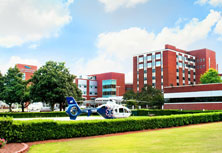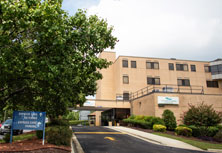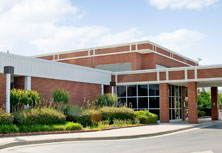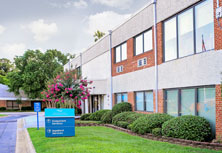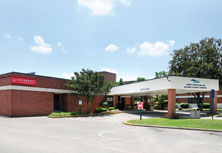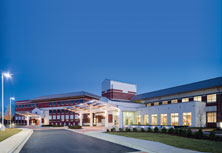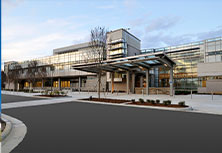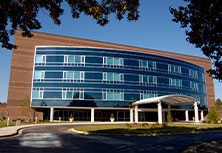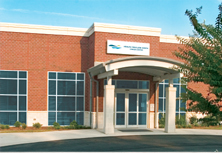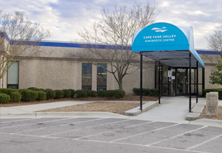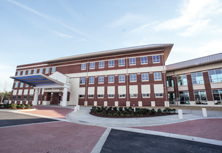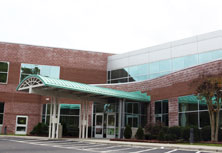Emergency Medicince Residency Program
Emergency Medicine Educational Goals
Educational Goals
During training, under the direct supervision of an attending physician, the trainee will attain a level of competence that will qualify them to become a certified physician in emergency medicine or allow the trainee to seek specialized training in the field of emergency medicine. Satisfactory levels of accomplishment must be demonstrated in the cognitive, psychomotor, and affective aspects of patient management. Upon satisfactory completion of the Emergency Medicine Residency Program at our institution, the trainee at each level should by the end of each year:
PGY 1
- Demonstrate competence in the care of patients in emergent situations, differentiating between important, less important, and/or unimportant information.
- Demonstrate competence in the basic pathophysiology of emergent cases, considering the differential diagnosis of the most likely conditions based on the presenting signs and symptoms.
- Prioritize the differential diagnosis from the most serious to the least serious pathology.
- Order and interpret common ancillary studies including labs and radiographs on the emergent patient.
- Initiate appropriate therapies in patients presenting with common emergency medicine complaints.
- Demonstrate competence in basic procedures such as venous and arterial punctures.
- Demonstrate competence in placing a peripheral intravenous line.
- Assist in airway management, showing a command for basic airway maneuvers, airway adjuncts, and ventilating a patient using a BVM.
- Identify abnormal vital signs and recognize the critically ill patient.
- Assist in the management of the critically ill patient under the direct supervision of the attending physician.
- Identify the need for hospitalization of a patient.
- Exhibit knowledge of the resources available for the emergent patient care.
- Achieve ACLS, PALS, and ATLS certification.
- Identify available resources and display a basic understanding in order to deliver evidence-based medical care.
- Communicate as a professional with patients, hospital staff, students, fellow residents and attending staff.
- Arrive timely and ready for work.
- Participate in sign-out at the beginning and end of each shifts and as needed to assure continuity of patient care.
- Step 3 of the Boards completed.
- All post-tests completed.
- Patient and procedures are logged into New Innovations.
- Medical Records are up to date.
- Satisfactory completion of rotations.
- Research requirements completed as necessary.
- In-Training Exam scores above the 50th percentile (for their respective year of training) or Clinical Competency Committee individual education plan requirements completed.
PGY 2
- Demonstrate competence in the care of more complex or severely ill patients including critical care and trauma.
- Demonstrate the application of basic medical knowledge during evaluation and care of patients with more complex problems.
- Demonstrate basic knowledge of medical specialties while caring for critically ill and multi-injured patients.
- Demonstrate competence in performing more advanced procedures including central lines, lumbar puncture, and chest tubes.
- Demonstrate increased competence in airway management including intubation and the use of other advanced airway techniques under the direct supervision of the attending physician.
- Communicate effectively with patient care team, begin to assume leadership position within the team, show foresight and planning in regards to patient care, concise and effective presentations, and development and execution of a cogent treatment plan.
- Demonstrate the ability to manage an increasing number of patients simultaneously.
- Licensure application completed.
- Medical records are up to date.
- Patient and procedures are logged into New Innovations.
- Satisfactory progress of ultrasound procedures logged.
- Satisfactory progress of critical care resuscitations logged.
- PGY 2 research requirements completed.
- Satisfactory completion of rotations.
- In-Training Exam scores above the 50th percentile (for their respective year of training) or Clinical Competency Committee individual education plan requirements completed.
PGY 3
- Demonstrate competence as the leader of the department including care delivery and over-all patient flow.
- Coordinate patient care to include appropriate evaluation and treatment by other health care professionals and consultants.
- Demonstrate mastery of basic pathophysiology and patient care across the continuum of emergency presentations.
- Demonstrate competency in teaching and supervising junior residents in the performance of procedures mastered during preceding years.
- Perform as lead physician in more complex cases including the critically ill and multi-injured patients.
- Supervise, assist, and provide clinical management of all patients within the emergency medicine department. This includes learning to guide medical students and junior residents in the care of their patients.
- Demonstrate improved communication with patient care team and function more effectively as team leader.
- Communicate effectively with other health care professionals, arranging complicated patient disposition involving further evaluation and testing.
- Demonstrate an understanding of the role of different specialists and other health care professionals in overall patient management. Medical records are up to date.
- Patient and procedures are logged into New Innovations.
- Satisfactory progress of ultrasound procedures logged.
- Satisfactory progress of critical care resuscitations logged.
- PGY 3 research requirements completed.
- Satisfactory completion of rotations.
- In-Training Exam scores above the 50th percentile (for their respective year of training) or Clinical Competency Committee individual education plan requirements completed.
PGY 4
- Function in the role of senior resident with its associated increase in responsibility.
- Lead assigned didactic sessions.
- Demonstrate competence in teaching and supervising more complicated presentations.
- Demonstrate significant knowledge and mastery of care delivery across the continuum of emergency medicine.
- Demonstrate an understanding of pre-hospital patient care and disaster preparedness and its impact on the department and exhibit an ability to participate in said care as medical command.
- Exhibit the lead in the resuscitation and continued management of the critically ill and multi-injured patient.
- Demonstrate an expertise in airway management and all levels of emergency medicine procedures.
- Medical records are up to date.
- Patient and procedures are logged into New Innovations.
- Satisfactory progress of ultrasound procedures logged.
- Satisfactory progress of critical care resuscitations logged.
- PGY 4 research requirements completed.
- Satisfactory completion of rotations.
- In-Training Exam scores above the 50th percentile (for their respective year of training) or Clinical Competency Committee individual education plan requirements completed.
